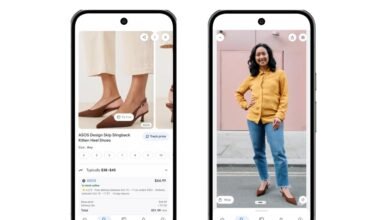Google’s New AI Tools Help You Learn Languages Faster

▼ Summary
– Google’s new AI-powered language tools offer personalized, real-world learning experiences, moving beyond textbook phrases to enhance natural language engagement.
– The “Tiny Lesson” feature provides tailored vocabulary and grammar tips for specific scenarios, helping users with on-demand learning when traditional lessons are insufficient.
– “Slang Hang” generates realistic conversations with native speakers, helping learners sound more natural, though users should verify slang meanings with reliable sources.
– “Word Cam” allows users to identify objects in their surroundings in their target language, promoting intuitive and context-driven vocabulary learning.
– These tools, supporting over a dozen languages, are available through Google Labs and aim to make language learning more dynamic and adaptable to real-life situations.
Google’s latest AI-powered language tools are transforming how people pick up new languages by offering personalized, real-world learning experiences. The tech giant has unveiled three experimental features designed to help learners move beyond textbook phrases and engage more naturally in foreign languages. These innovations leverage Gemini, Google’s advanced multimodal language model, potentially positioning it as a competitor to popular apps like Duolingo.
One standout feature, “Tiny Lesson,” tackles a common frustration—needing specific phrases in the moment. Users can describe a scenario, like losing a passport, and instantly receive tailored vocabulary and grammar tips. The tool even suggests context-appropriate responses, such as how to report the loss to authorities. This on-demand learning approach helps bridge gaps when traditional lessons fall short.
Another experiment, “Slang Hang,” focuses on making learners sound less robotic and more like locals. Instead of stiff, formal dialogue, it generates realistic conversations between native speakers—whether it’s a street vendor haggling or friends catching up. Hovering over unfamiliar slang reveals meanings and usage, though Google cautions that some terms may be misused or invented, so double-checking with reliable sources is wise.
The third tool, “Word Cam,” turns everyday surroundings into a vocabulary lesson. By snapping a photo, users can identify objects in their target language, uncovering terms they might not encounter in traditional lessons. For example, while someone may know the word for “window,” they might discover “blinds” for the first time. This visual learning method makes absorbing new words intuitive and context-driven.
Currently, these experiments support over a dozen languages, including Arabic, Chinese, English, French, German, and Spanish, with variations for regional dialects. Available through Google Labs, they represent the company’s push to make AI-driven language learning more dynamic and adaptable to real-life situations. While still in early testing, these tools hint at a future where picking up a new language feels less like memorization and more like natural conversation.
(Source: TechCrunch)





